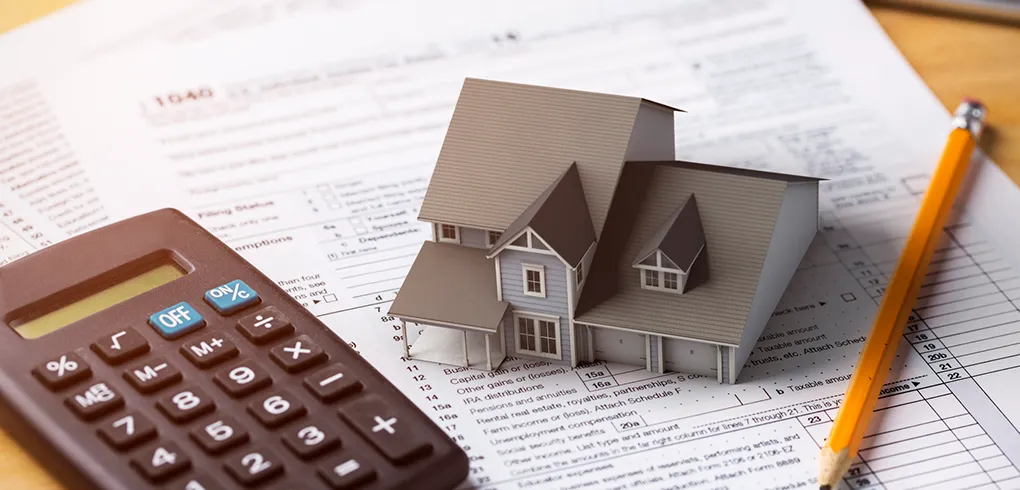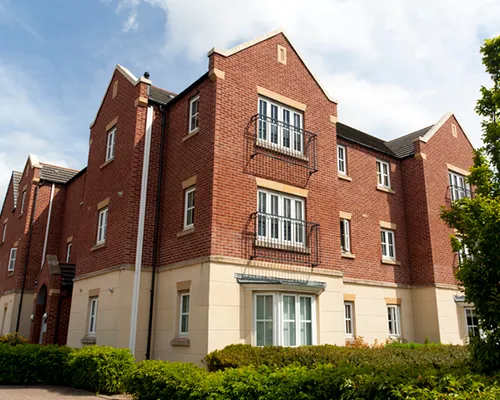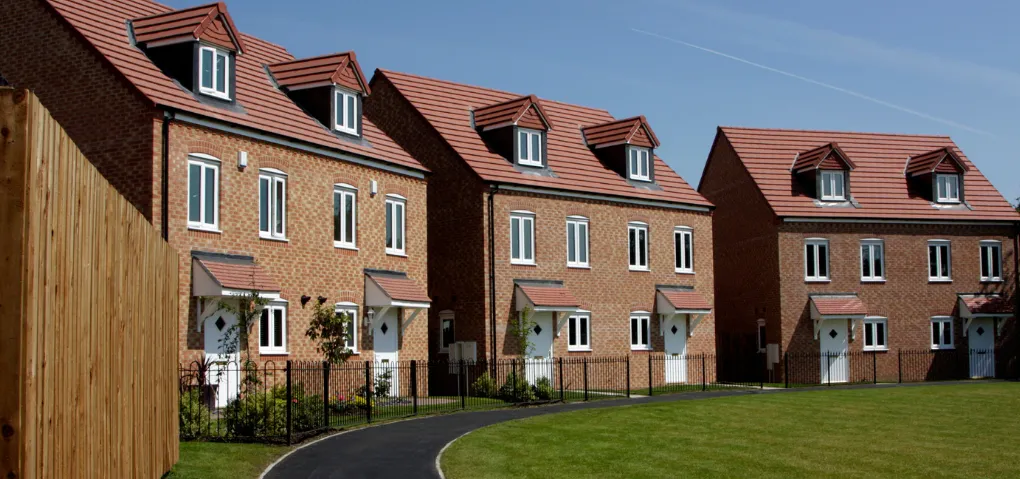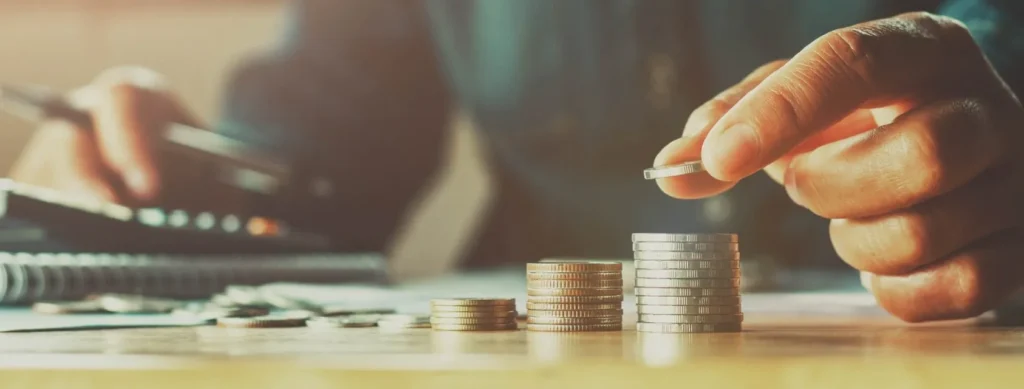
10% Deposit Mortgage
Is a 10% deposit mortgage right for you? Learn what a 10% deposit mortgage is, what mortgages are available with 10% deposits, criteria, other options & more.
There’s good news for buyers struggling to save a large mortgage deposit. Now 90% LTV (loan-to-value) mortgages are making a comeback, providing more options for homebuyers – especially those looking to buy their first house.
But what exactly is a 10% deposit mortgage – and is it the right mortgage for you? Read on to learn more.
Contents
What Is a 10% Deposit Mortgage?
A mortgage deposit is the money you put down to secure a mortgage. It’s a percentage of the property’s value. A 10% deposit mortgage, or 90% LTV mortgage, means you put down 10% of the property’s value and borrow 90% from the lender. This type of mortgage can be useful if you don’t have a large amount of savings and only a small deposit. LTV (loan-to-value) is the ratio describing the amount of money you borrow from the lender in relation to the purchase price of the property.
If you’re hoping to buy a home worth £200,000, a 10% deposit mortgage will mean you put down a deposit of £20,000 and need to get a mortgage for the remaining £180,000, or 90%.
Mortgage lenders consider the LTV when deciding the rate they’ll charge. The higher the LTV, the more interest you’ll have to pay. The lower the LTV, the less interest you’ll pay and the better the rates available to you. The majority of products available for residential purposes require deposits of at least 10%.
Should I Get a 10% Deposit Mortgage?

Whether a 10% deposit mortgage is right for you will depend on your situation. If you’re struggling to save more than that for a deposit, then a 10% deposit mortgage might be your best option. You may also want to consider buying a cheaper property so that your deposit makes up a greater percentage of the purchase price and you can get a mortgage with a lower LTV. Use our mortgage calculator for an idea of how large a mortgage you can afford based on your income. You can then use this information to work out the kind of property you can afford combined with your deposit. You can also see what your LTV will be based on the purchase price of the property and your deposit/loan amount with our LTV calculator.
What Types of 10% Deposit Mortgage Can You Get?
Not all mortgages are available at 90% LTV with 10% deposits. We go through which mortgages are and aren’t available with 10% deposits below.
First-time buyer
10% deposit mortgages are popular options for first time buyers. This is because saving up that first deposit to get on the property ladder can be difficult and a 10% deposit is the minimum most lenders ask for. Try our deposit calculator for an idea of how much you need to save each month to reach your deposit goal. It’s also worth finding out if you’re eligible for a mortgage through the Government’s Help to Buy scheme as a first time buyer.
Moving home
It’s possible to get a 90% LTV mortgage on your new property when moving home. You can use the equity built up in your existing property as a deposit for your onward purchase. The equity in your current property must be worth at least 10% of the value of the property you want to buy unless you’re contributing a cash deposit.
Bad credit mortgage with a 10% deposit
If you have a poor credit history and this is making it difficult to get approval for a mortgage, you may still be able to get a loan with a bad credit mortgage. However, lenders that offer these types of specialist mortgages usually require a deposit of at least 15%.
Remortgaging
You can remortgage at up to 95% LTV. This means you can release up to 95% of the equity in your property when you remortgage. You can use this cash for things like home improvements or other big expenses – e.g. purchasing a car, wedding costs, etc.
Buy-to-let
You cannot usually get a 10% deposit mortgage for a buy-to-let as most buy-to-let mortgages require you to have a deposit of at least 20%.
Am I Eligible for a 10% Deposit Mortgage?
Mortgage lenders will want to see that you can afford repayments on a 90% mortgage and that you’re a responsible borrower before agreeing to lend to you. Lenders will have set criteria that will include looking at your income and credit history.
Income
To check that you can afford the repayments on a 90% mortgage, lenders will review your income and expenses, including how much you spend on bills and living costs. They’ll also want to look at how much you pay in terms of debt repayments.
Credit history
A lender is taking a degree of risk every time they approve an application. And, the higher the LTV, the higher the risk for the lender. Therefore, they’ll want to see that you have a good credit history and are responsible when it comes to managing debt. If you have a poor credit history, it’s generally a good idea to spend as much time as possible – at least 6 months ideally – improving your credit report before applying for a mortgage. Even missing just one credit card payment can be enough to have a negative impact on your credit score.
What Are the Disadvantages of a 10% Deposit Mortgage?
As they have high LTVs, 10% deposit mortgages are generally more expensive than mortgages with lower LTV ratios as rates tend to be higher and you’re borrowing more money overall. There’s also a higher possibility of encountering negative equity, where your mortgage is more than the property’s value.
How to Make a 10% Deposit Mortgage More Affordable
If you can’t save enough to put down a large deposit, you may be able to avoid paying higher rates if you can get financial help from your family. There are several ways that parents can help first time buyers get on the property ladder that doesn’t involve having to put down a significant lump sum, including the following.
Family offset mortgages
A family offset mortgage lets parents use some of their savings or the equity in their home to help their child put a deposit towards a property. The savings are linked to the borrower’s loan, reducing the loan amount on which interest is paid. If equity is used, the lender puts a charge on the parent’s property. No payments are made on this charge and it reduces the interest in the same way as the savings. Family offset mortgages essentially allow the buyers to raise higher deposits and access much better rates. However, if mortgage repayments are missed, the parents’ home or savings may be at risk.
Family deposit mortgages
A family deposit mortgage, also known as a Family Springboard Mortgage, is often a good option if parents have a lump sum of money they want to use to help their child get on the property ladder. The money is kept in a savings account that’s linked to the mortgage. It’s used to reduce the amount of mortgage loan on which the lender will charge interest. For example, if the mortgage is £170,000 and a parent has put £20,000 in the offset bank account, interest will just be charged on £150,000. This will reduce the size of the monthly mortgage repayments. Parents will get the money returned to them, usually within 3 – 5 years, and often with interest.
Can I Get a Buy-to-Let Mortgage with 10% Deposit?
Most buy-to-let mortgage lenders require you to have a minimum deposit of 20%. Lenders require higher deposits for buy-to-let mortgages as they view these as riskier than a standard residential mortgage. You won’t be able to get a 10% deposit buy-to-let mortgage.
Are There 10% Deposit New Build Mortgages?

There are 10% and even 5% deposit mortgage options for new build properties. These are accessible via the Government’s Mortgage Guarantee Scheme.
Can I Use a 10% Deposit Mortgage to Buy a Second Home?
Very few lenders offer 10% deposit second mortgages. Most mortgage lenders will only offer a mortgage on a second home if you’re able to provide a 20% – 25% deposit. If you can get a 10% deposit mortgage for a second home, you’ll have the standard higher interest rates for a 90% mortgage and face stricter criteria.
Are 5% Deposit Mortgages Available?
While mortgage lenders tend to require borrowers have a mortgage deposit of at least 10% of the property price, it’s possible to get a mortgage with just a 5% deposit. Many mortgage lenders now again offer 5% deposit mortgage products – also called 95% mortgages – which are ideal if you’re struggling to save enough for a bigger deposit. However, these mortgages usually come with even higher rates.
Mortgage Guarantee Scheme
The UK government launched a Mortgage Guarantee Scheme in 2021, where participating lenders offer 5% deposit mortgages of up to £600,000. The repayment mortgages are available to first time buyers and existing homeowners.
Can I Get a Mortgage Without a Deposit?
100% mortgages aren’t really a thing anymore. The closest you’ll get is a Family Springboard mortgage which enables your parents to help you with a deposit without giving you their savings.
How Can I Save for a Bigger Deposit?
As the best interest rates tend to be reserved for people with larger deposits of 20% or more, it’s a good idea to try to save towards putting down as much as you can afford. This will increase your chances of being accepted for a mortgage and give you access to a broader range of lenders and mortgages. If you’re finding it difficult to save, here are some ideas for how to increase your deposit.
Give your savings a boost
If you’re at the start of saving for a mortgage deposit and expect to be saving for a while, make your savings work harder by putting the money in a Lifetime ISA (LISA). A LISA is a long-term savings account for first time buyers that can be opened between the ages of 18 and 40. You can put up to £4,000 a year into it until you are 50. Meanwhile, the Government will add a 25% bonus on top, up to £1,000 a year.
Reduce your expenses
Reducing your outgoings can be a fast and effective way to save money. Where possible, cut down on unnecessary spending, cancel unused subscriptions and shop around for cheaper utility tariffs, broadband, and mobile phone offers.
Save on rent
Many people struggle to save for a large deposit when paying rent every month. Getting a flatmate could be an effective way of reducing your rent and household bills. You could also consider moving somewhere smaller and cheaper, as long as doing so won’t increase your travel costs. If you have a good relationship with your parents and they have the space, there’s also the option of moving back in with your family. It could save you hundreds every month and help you reach your savings goal sooner.
Increase your income
Anything you can do to increase your income – such as working overtime, getting a second job, freelancing in your spare time, or selling things you no longer use can help boost your savings. Remember that you may have to submit a self-assessment tax return and pay tax on your extra income.
Earn money on what you buy
Loyalty cards are a great way to earn extra money on your purchases. If you have a credit card, check to see what cashback offers it has, as some will let you earn a percentage of what you spend as a credit on your bill. If you use it for all of your regular spending, you could save a considerable amount of money. However, make sure you pay off the balance in full every month. By using a credit card responsibly, you help improve your credit score and show prospective mortgage lenders that you can manage credit responsibly.
What to Do While You Save for a Deposit
It’s a good idea to use the time you spend saving for a mortgage deposit doing a few things that will improve your chances of getting your mortgage application accepted when you eventually apply. For instance:
- Get all your paperwork ready, including copies of bank statements and payslips
- Be in long-term employment with a regular income
- Have a good credit history
- Pay all your bills on time
- Be on the electoral register
You can still get a mortgage if you have a bad credit history, but working on these areas before you submit your mortgage application will give you more options and access to better deals.
To find out more about 10% deposit mortgages or what other options are available for first-time buyers or buyers with small deposits, contact us by submitting an online enquiry.
Get in touch with our experts
Book an appointment with an adviser today and we’ll help you work out which mortgage deal is best for you and your requirements.
Read More Mortgage Guides
See also
Budget speculation
FCA Section 165 Information Request Should Include Estate Agents
Should a Down Valuation Be Seen as a Negative or a Reflection of the Current Market Value?
April Mortgages’ 100% Fixed Rates
The FPC’s 15% Flow Limit is Past its Sell-by Date
What Is Buy Now Pay Later and What Does It Mean for My Mortgage Applications?
Trump Tariff Madness
FCA Blue Sky Thinking on Pensions & Mortgage Deposits

